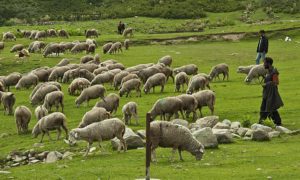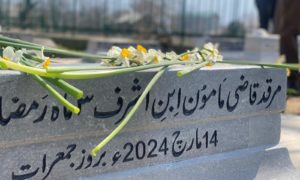A team of doctors at the Sher-i-Kashmir Institute of Medical Sciences performed a Stem Cell Transplant for the first time in Jammu and Kashmir.
The team of doctors included Dr Sajad Geelani, Dr Reashma Roshan, Dr Afaq Ahmad Khan and Senior Residents, Resident staff as well as Paramedical Staff of Ward 5P, technical staff and office staff of the Clinical Haematology Department headed by Dr. Javaid Rasool.
The team created history by performing this life saving procedure on a 16 years old boy from Ladakh.
The boy had been diagnosed with Aplastic Anaemia, a life-threatening condition for which the only available treatment is a Stem Cell transplant, also called a Bone Marrow transplant.
Dr. Rasool expressed happiness over the fact that patients from Jammu and Kashmir will now be able to access this facility at Srinagar, which previously required travel to different parts of India.
This is a costly procedure, which costs somewhere between 20 to 50 lakh rupees depending upon the hospital and the degree of complexity of the surgery.
Dr. Rasool pointed out that most of the patients cannot bear the financial burden of such treatments and the availability of the procedure in Srinagar is expected to bring relief as it costs around 4.5 lakhs, an average 15% of what it costs in India.
Pertinently, the procedure is performed at only 2 Government Hospitals in India; All India Institute of Medical Sciences (AIIMS), New Delhi and Post Graduate Institute of Medical Education and Research (PGIMER), Chandigarh.
What is Stem Cell Transplant
A Bone Marrow transplant means the replacement of diseased or damaged bone marrow with healthy bone marrow.
Bone Marrow is a tissue of the body, which contains cells called Stem Cells.
Stem cells have the ability to make all the components of the blood. If the stem cells in the bone marrow are damaged, it means that the body will no longer be able to make blood and its components. This occurs due to a number of underlying reasons like Cancers and chemotherapy.
In case of Aplastic Anaemia, the condition which the boy admitted at SKIMS had, the Bone Marrow is not able to form enough healthy blood cells.
The condition is life threatening and Bone marrow transplant is the only available mode of treatment as of now.
The process
The first bone marrow transplant was performed in 1968 on an infant with an immune deficiency syndrome called Severe Combined Immune Deficiency (SCID). His donor was his 8 years old sister.
Today, in Jammu and Kashmir’s first bone marrow transplant, the doctors obtained the healthy stem cells from the patient’s sibling.
The first step in the stem cell transplant is the procurement of the stem cells from the donor.
Earlier stem cells would be obtained directly from the bone marrow of the donor by making an incision on the hip bone and collecting the marrow.
However, with the advancement of biomedical technology, the donor’s marrow can be stimulated by medication to mobilize stem cells into the blood, from where they are later collected.
“During this time the donor can read a newspaper and later can go home after 2 hours,” said Dr. Rasool.
Similar to a blood transfusion, bone marrow transplant also requires compatibility between the donor and the recipient, called an HLA compatibility. After confirming compatibility, the recipient is “conditioned”.
Conditioning involves destructions of the recipient’s damaged marrow, which also means the destruction of the immune system as the cells of the immune system are formed by the marrow.
The immune system of the recipient is supressed so that the body doesn’t mount an immune response against the transplanted, foreign, marrow.
Once the conditioning is done, the donor stem cells are transplanted into the recipient.
The complications
The stem cells from the donor are foreign for the recipient’s body and hence there are chances of transplant rejection.
To manage that, the recipient is put on immunosuppressants.
Other complication is what is called Graft versus Host Disease (GVHD), in which the donor stem cells treat the host body as a germ that needs to be attacked. This is managed through medication as well.
Dr. Rasool said that the patient had a successful graft, which means that the donor stem cells are making blood cells in the recipient.
The patient has been discharged but the team of doctors are following up on him on regular basis. He had shown some rash which is classic in GVHD but that has been managed.
“The patient is doing all well as of now. We have admitted another patient suffering from Thalassemia, his case is being discussed and he will most possibly receive stem cell transplant in the coming weeks,” said Dr. Rasool.
He said that they are expecting to do the transplant on patients with blood cancer relapses who are not responding to chemotherapy.
Patients with bone marrow failure disorders like Aplastic Anaemia are also likely to avail this treatment at SKIMS.
Right now, only one room at SKIMS is equipped with the required infrastructure to support the procedure but State Cancer Institute is expected to work on this front, now that doors have opened.
Misbah Haqani is an independent researcher interested in understanding the social determinants of health and the socio-political aspects surrounding healthcare in Kashmir.
Free Press Kashmir is now on Telegram. Click here to Join.
FPK Android App for 2G. Click here to Download.








